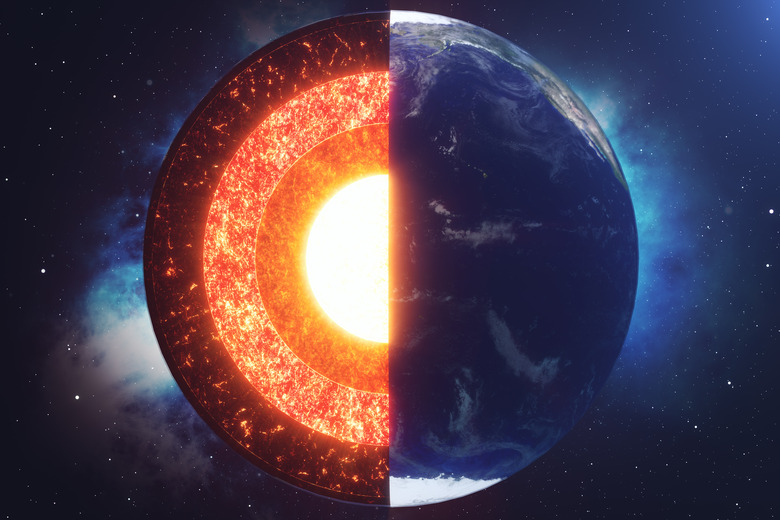There Could Be Chunks Of An Alien World Hiding In The Earth
There may be chunks of an alien planet hiding within Earth. Scientists have long theorized that Earth collided with a planet called Theia 4.5 billion years ago, creating the Moon that we now see every day. Previous theories suggest that Theia was destroyed completely in the collision. However, a new study suggests that the alien planet lives on within the Earth's core.
Because the alien planet was utterly destroyed in the collision, it's been challenging to prove that Theia ever actually existed. But, if there are actually chunks of Theia hidden in Earth's core, as this new study suggests, we could finally prove the origins of the Moon and even shed light on the inner workings of our planet.
The discovery was made thanks to a new supercomputer simulation, which has provided evidence that chunks of Theia might still exist in the boundary between the surface of our planet, the mantle, and the core.
Of course, getting to these possible slabs of alien world is easier said than done. Outside of proving a long-standing theory about the origins of the Moon correct, this new information also has the ability to teach us more about a mysterious area within our planet known as the core-mantle boundary.
Located directly between the limit of the mantle and the core, the core-mantle boundary shows a massive spike in the planet's internal temperature. Further, scientists have observed seismic waves slowing down for unknown reasons when passing through this region of the planet. This has prompted many to believe that something may be wrapped around the core.
It's this unexplained layer that could be home to the remaining chunks of Theia, helping to keep the heart of our planet warm. Other theories believe this boundary could be made up of ancient ocean floors, but some things just don't line up when using that theory to explain things. For instance, some lava that is found at the surface is believed to be roughly 4.5 billion years old.
That would mean that the lava had traveled from the core-mantle boundary around the same time as the collision. As such, that makes the region far too old to be an ocean floor. The simulation at the center of this study tracked over 100 million virtual particles to try to determine where they went when Theia crashed into Earth.
Over time, the chunks appear to settle within the very boundary between the core and mantle of our planet. Whether the simulation is factually correct is another matter. But it does raise some very interesting questions for scientists to work through.
